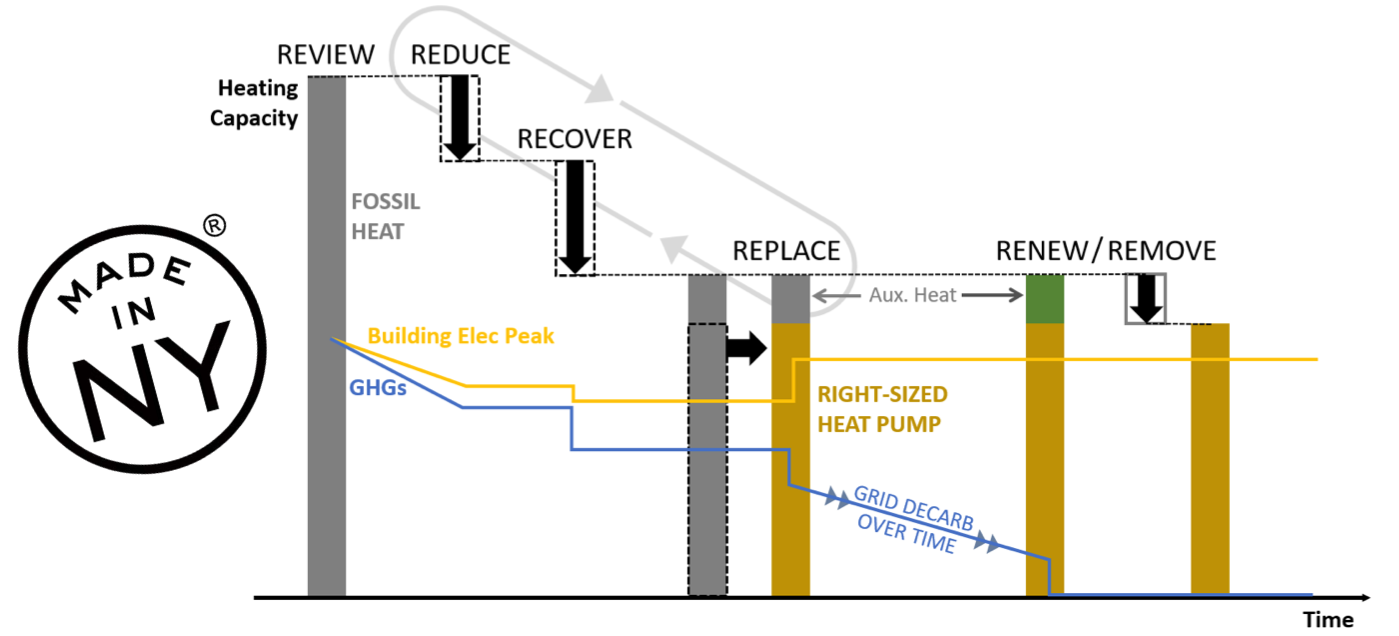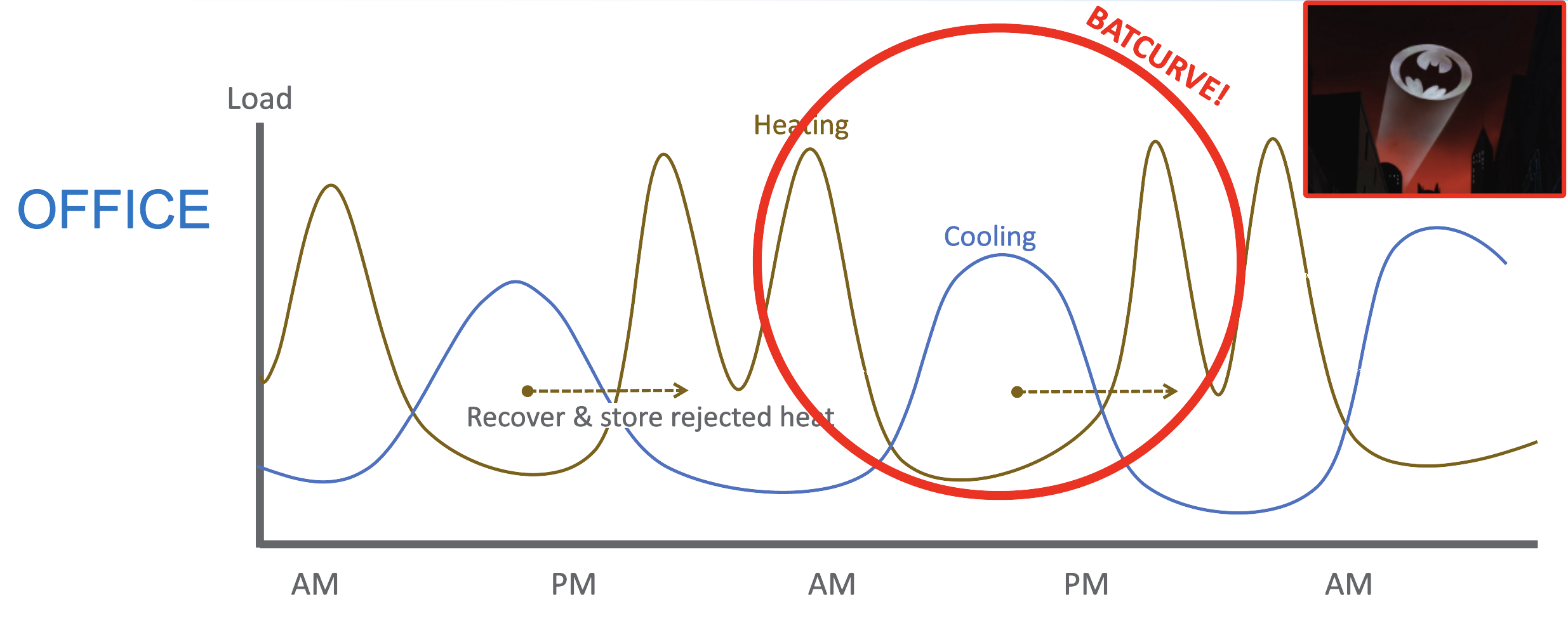New engineering design means and methods are needed to enable and speed adoption of low carbon retrofit technologies. Efficient heating and cooling energy systems are widely available but are underused due to lack of knowledge and thermal system interaction. Decarbonization requires adapting distribution designed for legacy thermal supply to electric and renewable thermal energy systems. The solution is Resource Efficient Electrification (REE). This novel approach emerges from the Empire Building Challenge after one year of collaboration among real estate partners, industry-leading engineering consultants and the NYSERDA team. REE is a design strategy that can help alleviate space constraints issues, provide peak thermal capacity, optimize operational efficiencies, utilize waste heat, and reduce the need for oversized electrified thermal energy systems, which creates retrofit cost compression. It is a framework of building decarbonization tailored to cold climate tall buildings but that can be applied across New York’s, wide array of building types, vintages and systems. This approach incorporates strategic capital planning, an integrated design process, and an incremental, network-oriented approach to deliver building heating, cooling, and ventilation that:
- Requires limited or no combustion,
- Enables carbon neutrality,
- Is highly efficient at low design temperatures and during extreme weather,
- Is highly resilient, demand conscious, and energy grid-interactive,
- Reduces thermal waste by capturing as many on-site or nearby thermal flows as possible, and
- Incorporates realistic and flexible implementation strategies by optimizing and scheduling phase-in of low carbon retrofits .
Resource Efficient Electrification focuses on implementing enabling steps that keeps future optionality as technology and policy evolves. This framework allows the building owner or manager to take action now instead of waiting for better technology and potentially renewing a fossil-fueled powered energy system for another life cycle.
The figure below illustrates a conceptual framework for accomplishing these objectives and overcoming the barriers described here . Specific measures and sequencing will be highly bespoke for a given building, but engineers and their owner clients can use this bucketed framework to place actionable projects in context of an overarching decarbonization roadmap.
A Step-by-Step Process to Use REE to Advise Decarbonization Efforts:
- Understanding a building's fossil fuel use in detail is a critical first step. Make an effort to understand when, where, how and why fossil fuels are being consumed at the building and under what outdoor temperature and weather conditions. Conduct a temperature BINS analysis to know how much fossil fuel is consumed during various temperature bands (typically in 5 or 10 degree increments) from design temperature up to the end of the heating season. Make an effort to understand cooling season usage patterns in detail.
- While electrification is desirable to combat climate change, energy efficiency is just as important than ever. Reducing heating and cooling loads across all weather conditions is a major early step to achieve REE.
- Draw a theoretical box around your building and identify the ways heat is being gained or lost. Hint: some places to look at are cooling towers, facades and windows, elevator machine rooms, through your sewer connection, or at your ventilation exhaust system. Cooling towers operating in the winter are an obvious energy wasting activity. Seek solutions to reduce, recover, and recycle or reuse, and store this heat.
- After, or in parallel with the previous steps, begin to electrify the building heat load, starting with marginal "shoulder season" loads (spring and fall). Don't force electric heating technology such as air source heat pumps to operate during conditions for which they weren't designed. Optimize heat pump implementation through a "right sizing" thermal dispatch approach to avoid poor project economics and higher operating expense. This means you will continue to retain an auxiliary heating source for more extreme weather conditions until you are ready to fully eliminate fossil fuels from your building and before your targeted decarbonization date. This approach gives you time to identify the right peak period heating solution while allowing you to take action early and drive down emissions. Emissions reduced sooner are more valuable than emissions reduced in the future (learn more about the time value of carbon emissions).
- Remove your fossil fuel connection and meet your decarbonization deadline!



